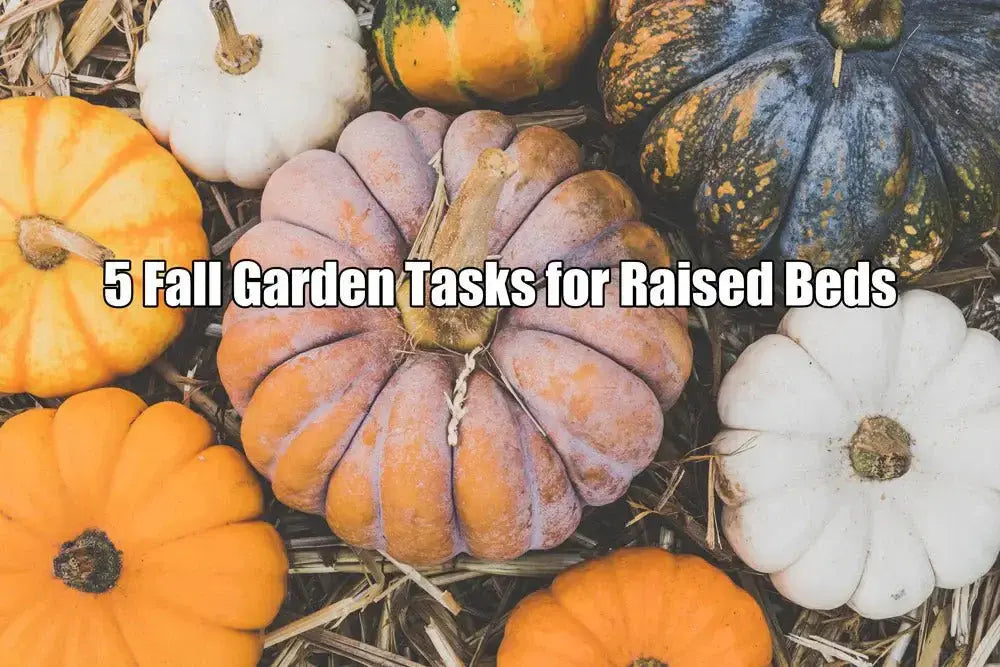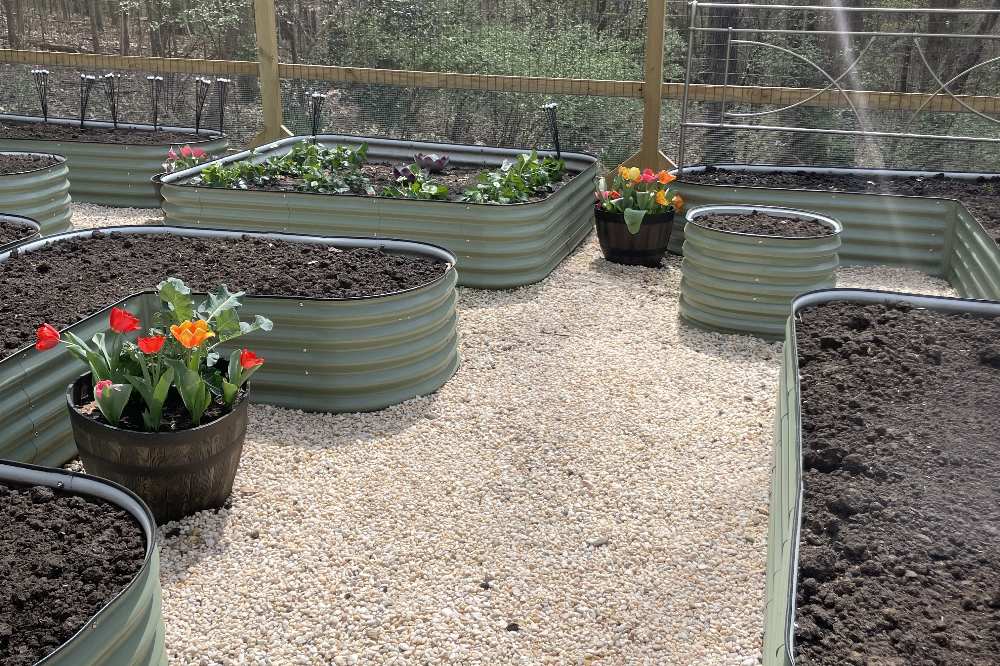Vegega Garden
Sep 19th, 2025
Succession Planting in Raised Beds: How to Keep Harvesting Into Fall
Keep Garden Harvesting Into Fall Season
As the days get shorter and the air turns crisp, many people think their gardening days are numbered. However, fall can actually be one of the most rewarding times to harvest delicious crops - especially if you are using metal raised garden beds!
With some strategic planning and a few tricks to extend the growing season, you can continue to enjoy fresh produce well into the cooler months, getting more from your garden than you might have imagined.
In this blog, we will cover why raised beds are great for growing fall crops in cooler areas, how to make the most of succession planting, and what season-extending techniques can help you maximize your autumn garden harvest.
⬇️Click and Jump to section
- How to Keep Your Raised Beds Productive?
- Quick Tips for Succession Planting in Fall
What to Expect from Your Beds in September
Succession planting, which some gardeners like to call successive sowing, is all about keeping your garden full of fresh crops by planting seeds in waves. Fall does not mean your gardening is over. On the contrary, it just means more planting!
However, you should know the right ways for fall planting if you want to achieve the desired outcomes. To help you stay on the right track, we have included some essential guidelines that will lead you in the right direction.
1. Choose The Right Plants
The first step in succession planting is finding the right plants for your garden. If you opt for off-season ones, you will make a mistake at the very beginning and end up without the expected results.
So, here are some suggestions you may want to consider for your raised beds.
- Leafy Greens
You can start planting seeds for your salad garden even before the last frost hits. For example, you can count on lettuce seeds. These grow fast, meaning you will have fresh produce quite soon. Besides lettuce, you can also consider arugula, mizuna, spinach, and even bigger veggies like cabbage. If you decide on several types of leafy green plants, you will have fresh vegetables every week. - Annual Herbs
Herbs like basil, cilantro, and dill have a tendency to go to seed when the temperatures shift. If you want to keep enjoying fresh cilantro at all times, you will want to plant new seeds every couple of weeks. This way, just as the older plants start to go to seed and lose their flavor, you will have fresh ones ready to harvest. - Root Crops
Root vegetables like carrots, radishes, and beets are perfect for succession planting. You can pull out the ready ones, enjoy them in your meals without being buried in vegetables, and replant them in any newly available space. - Legumes
Bush beans and peas are super easy to plant successively if you have some empty spots in your raised beds. These types stay small and tend to produce all at once. Just plant another round of bush beans or peas about 2 to 3 weeks after your first batch. That way, you can enjoy your first harvest around 60 days after planting, with the next batch ready about 20 days later.
2. Use The Right Planting Steps
Once you have harvested your summer lettuce or radishes, consider planting some fall favorites like spinach, kale, or Asian greens in that same spot.
Moreover, for better space usage, try growing quick-maturing crops like radishes alongside slower ones like carrots or beets. The radishes will be ready to harvest before the others need their space.
And do not forget to check out fast-maturing varieties! Many seed companies offer options that are perfect for short growing seasons and can handle cooler weather. Look for labels that say “early,” “cold-tolerant,” or “bolt-resistant.”
3. Use Season Extenders for Your Raised Beds
If you are looking to extend your harvest into late fall or even winter in some areas, you will definitely want to consider using season extenders. Raised beds are perfect for this because they are compact and easy to work with. (Read the benefits of using raised beds in garden.) Here are some great options:
- Row Covers and Frost Cloths: These lightweight fabrics can trap warmth while still letting in light and water. Just drape them over hoops or directly on your plants when frost is on the horizon.
- Cold Frames: Imagine mini greenhouses sitting right on your raised bed! You can use old windows or clear polycarbonate lids to create them, which will collect solar heat during the day and help keep your plants cozy at night.
- Low Tunnels: For this one, you will bend some PVC or metal hoops over your raised bed and cover the top with greenhouse plastic or row fabric. This setup forms a tunnel that can warm up the air inside by several degrees.
- Mulching for Roots: If you are growing root veggies like carrots and beets, adding a thick layer of straw or shredded leaves can provide insulation. This way, you can actually “store” your veggies in the ground and easily harvest them through late fall and into early winter.
Transitioning Beds to Fall Plantings
If you want to get the timing right for your plantings, start by checking the maturity date on your seed packets and then count back from your average first frost date. This way, your crops will have enough time to grow before the cold sets in.
Moreover, do not forget to give your soil a little love! Since succession planting can deplete nutrients, it is a good idea to add some compost or organic fertilizer between your plantings to keep everything healthy and strong.
And remember to water consistently - even when it is cooler outside. Plants still need regular moisture, and raised beds tend to dry out quicker than regular garden soil, so make sure you are not skimping on watering as fall rolls in. Check the article about 5 Fall Garden Tasks for Raised Beds.
Recommended Raised Beds
Conclusion
As you can see, you do not have to stop gardening just because the nights are getting chilly! With raised beds, succession planting, and some easy season extenders, you can keep harvesting for weeks or even months as the weather cools down. So, before you put away your gardening tools, remember that with a bit of planning, you can keep enjoying fresh flavors from your garden until the snow starts to fall!
For more gardening tips, check out our other blogs.



